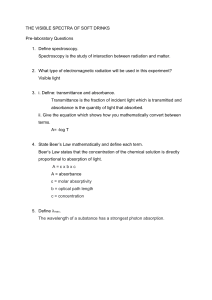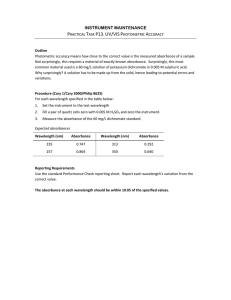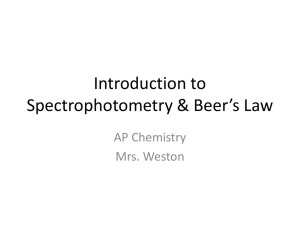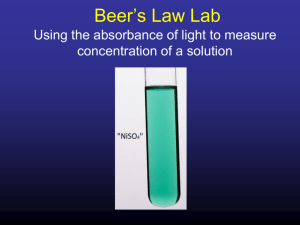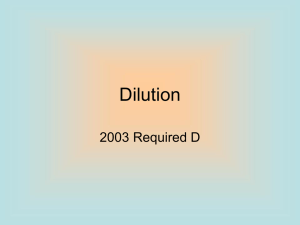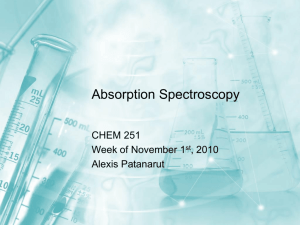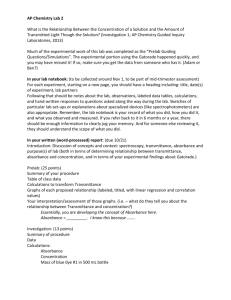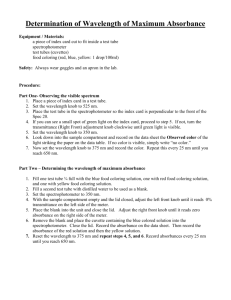Beer's Law
advertisement
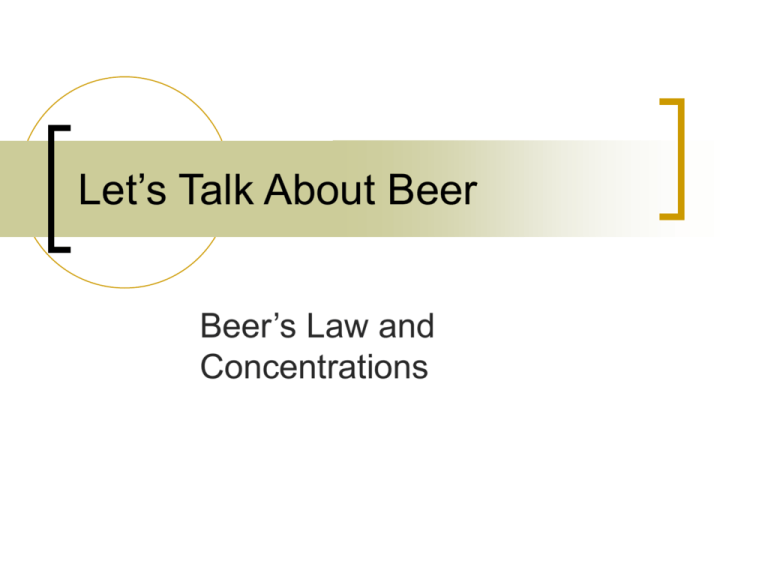
Let’s Talk About Beer Beer’s Law and Concentrations Solution Concentration Reminders Concentration expresses how the amount of solute and the amount of solution compare Our unit of choice: Molarity = mols/L What do you notice about the solutions? Why Does Color “Fade” as Concentration is Lessened? Conc is moles (number of ions/atoms/molecul e) per space More molecules means more light is “caught” Examples Beer’s Law Beer’s Law quantifies the relationship between color and concentration Beer’s Law states that the absorbance (why?) of light by a solution is directly proportional to Emissivity Cell width concentration So, What Does This Means It means that a graph of absorbance of light by a “kind” of solution TO the concentration is linear. It means that predictions are accurate and reliable We can find concentrations by comparison How Do We Do This? We make several solutions with known concentrations We determine which wavelength or color of light the solution responds to best We measure that transmittance and/or absorbance for the known solutions and the unknown solution We graph the knowns and interpolate for the unknown A Successive Dilution Example Design a process of successive dilution to make 250.0 mls of the following solutions from a 0.85 M stock solution: 0.50 M, 0.30 M, 0.10 M. Why Not Transmittance? Imagine an area enclosed by a curtain containing a mystery number of people Each person can catch and hold 2 tennis balls We throw 1000 balls into the area We measure what comes out (Trans) But we find the number of people by what doesn’t come out (Abs) # People is related to number of balls caught (Abs) Spectroscopy: The kind you can see Spectroscopy involves the study of light that is absorbed or emitted by a substance Visible spec. involves light we can see The plan: We’ll shine light that is absorbed well into solutions of known concentration We’ll make a plot of known concentrations versus absorbance We’ll test our unknown solution We’ll interpolate to find the concentration that matches its absorbance Great! How do we do that? Calibrate the machine Find the best wavelength (lmax) Test all solutions at that wavelength Graph or use “factor” Calibration of Spec 20 Allow the machine to warm up Set wavelength to desired value (400 nm) With sample chamber empty set %T to zero using left knob With water (or some other solvent) in sample chamber set %T to 100% using right knob Repeat for each wavelength Finding lmax Calibrate machine at 400 nm Place one solution (usually a “middle” concentration) into sample chamber Record data Reset machine to 425 (or 450) nm Calibrate and test same solution Repeat until you reach 750 nm Testing the solutions & unknown Once you’ve found the best wavelength (light is absorbed best) test all solutions and unknown at this wavelength Use data to find concentration of unknown Finding the unknown Suppose this graph is generated The unknown absorbance is 0.500 Find 0.500 absorbance Across and down The concentration is 0.775 (or so)
